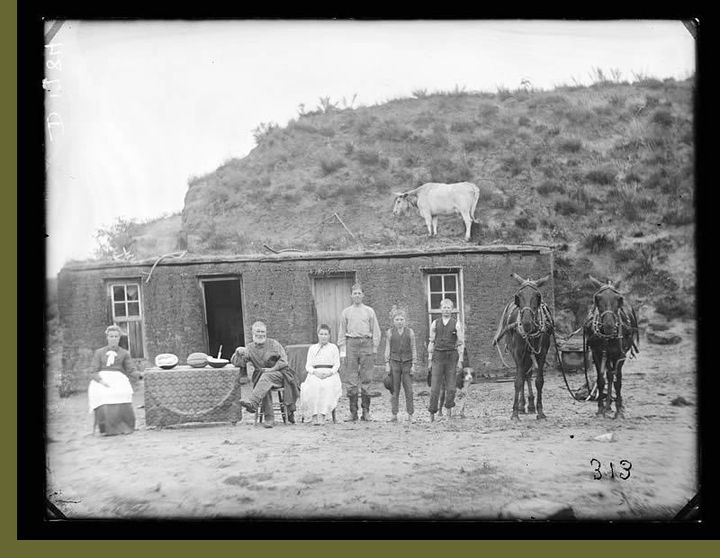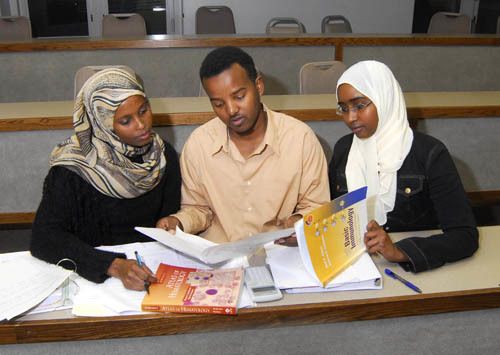
Kindness abounds in the American Midwest. In a diner in Ypsilanti Michigan, the waitress called me "sweetheart," and slipped me a free cup of coffee with a wink and a smile. In Minnesota and the Dakotas, my frequent roadside stops for gas were met with friendly men and women eager to make conversation beneath the stuffed elk peering from the ceiling. Down the mighty Missouri and through Iowa, the down to earth citizenry continued to impress me with their straightforward politeness and all-American charm. The U.S. Midwest, America's heartland, supposedly embodies the "real" America of working class, white families. This is the America portrayed again and again in popular culture, from "The Music Man" to Gilmore Girls, a case study in the characteristic narrative that is America. However, the perception of the Midwest as the most authentic America contains an inherent flaw: most of the region was settled by immigrants who were not American at all.
Settlement in this region opened up after the daring expedition of Lewis and Clark's Corp of Discovery in 1806, and most of the initial settlers hailed from New England. However in the late 1800s with the end of the Civil War and the establishment of the railway system, immigrants flooded into the region: Germans, Irish, Danes, Swedes, Norwegians, Poles, Czechs, Armenians, Finns, Hungarians, and more flocked to the fertile farmland of the Great Plains, spurred on by incentives offered by the federal government. These immigrants were persecuted in their own time: Irish Americans in the Midwest, like their counterparts on the East Coast, were denied even the opportunity to apply for jobs and darker-skinned Armenians faced blatant discrimination from both farmers and store owners alike. Throughout the earlier 20th century, these immigrants were looked down upon, forced into lower paying jobs, and seen as "lower-class." Yet, these stalwart Eastern Europeans overcame both the hardships of prairie life and the persecution of their neighbors to form vibrant communities, many of which still thrive today. Despite the xenophobic and anti-immigrant rhetoric of their time, they managed to assimilate into American life while retaining their own country's unique cultures, a feat that continues to be a source of pride for their descendants to this day.

Eastern European immigrants in Custer County, Nebraska
Now, the descendants of that first wave of immigrants have spread their roots throughout the Midwest as a new influx of immigrants begins to move into the region. Beginning in the late 1990s with Somali refugees, this new Midwestern migration has continued with Hmong, Eritreans, Ethiopians, Tibetans, Lao and Cambodians, all pursuing the same dream as the Eastern European migrants who preceded them, the hope for a better life. However, these immigrants have been met with rumbling resentment from the white population of the Midwest. In fact, Trump's strong anti-immigrant rhetoric seemed to resonate best in the Midwest communities that saw dramatic increases in their foreign-born populations. Half of the counties experiencing at least a doubling of their diversity between 2000 and 2015 were clustered in five Midwestern States, according to analysis from the Wall Street Journal. With few exceptions, these communities voted for Trump in November's election. Other studies suggest that Trump support was even higher in Midwestern areas without immigrants, cities and towns that remain overwhelmingly white.

Somali immigrants in St. Cloud, Minnesota
Here, I will veer away from facts, studies, and statistics and resume my personal narrative of my Midwest experience. My journey through our nation's heartland was spattered with kindness, for I believe the men and women who live there to be people with large hearts and staunch characters. However, I also believe that they resist the influx of immigrants into their communities, not because they are inherently racist, but because they are afraid. The Midwest, with its continually declining population and high rate of emigration to the East and West Coast, needs immigrants to provide jobs, boost the economy, and stimulate city growth. Rationally, Midwesterners should be welcoming immigrants to the region because of all the benefits to the economy that they bring. However, I am understanding more and more that the current political climate relies on rationality much less than on emotion. Life on the plains moves at a slower pace than on the streets of Manhattan, for only a steady and slow existence can survive the harsh Dakota winters or the baking Nebraska summers. Midwesterners are afraid, of the decline of the rural population, the influx of strange immigrants, and the rapid expansion of the technology economy at the expense of agriculture. These reasons are valid, yet the solution is not to remain stagnant. The solution is to embrace change, to honor the intrepid spirit of their immigrant forefathers, and to extend a hand of welcome to the new Americans flooding into the Midwest from foreign countries. Eastern European immigrants molded the American Midwest in a positive way; given the chance, new immigrants from Africa, South America, and the Middle East will do the same.
